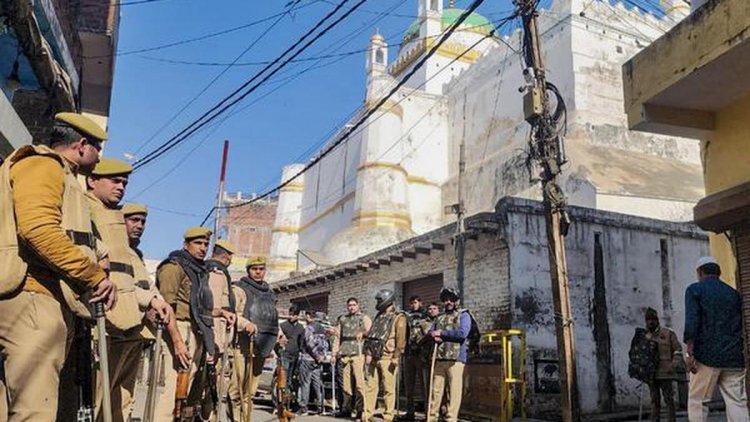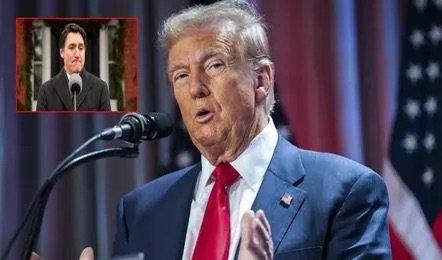Saffronists are reviving the disputes over temples and mosques

The Ram temple was built under the Ayodhya verdict and was inaugurated by Prime Minister Narendra Modi on 22 January 2024. But due to the half-hearted implementation of the said verdict, many other mosques and dargahs have become new targets, which is creating communal tension and hostility between Hindus and Muslims across the country, which is completely contrary to the expectations raised by the Ayodhya verdict.
If we look at the 1989 BJP election manifesto on Ayodhya Ram Janmabhoomi vs Babri Masjid, then it has been a political issue for more than 35 years. They had written in their election manifesto that the Government of India has allowed tensions to escalate and social harmony has been seriously affected by not allowing the reconstruction of the Ram Janmabhoomi temple in Ayodhya on the lines of the Somnath temple built in 1948. However, the current situation in the country belies their claims. There has been continuous politics on the Ram temple. After the overwhelming support received by Lal Krishna Advani for the Rath Yatra in 1990, the BJP made it a political issue during the 1991 elections. In its 2024 election manifesto, the BJP had described the Ram temple as the ‘five centuries old dream of the people’, which has now come true.
After this, the communal tension and incitement should have stopped. But perhaps the ideological source of the BJP, the RSS, has got out of the control of the communalists with thousands of heads and are now targeting the mosques and dargahs in Kashi and Mathura, which was their old demand. During the construction of the Somnath temple, an agreement was reached between the Hindu and Muslim communities not to target other mosques and dargahs. The Ayodhya verdict also upheld the Places of Worship (Special Provisions) Act 1991, under which no provision can be made to change the character of any other place of worship. This Act was declared to fulfill secularism, which is a fundamental feature of the Indian Constitution.
Among the many other targets are the prominent Tilla Wali Mosque in Lucknow, Gyanvapi Mosque in Varanasi, Shamsi Shahi Mosque in Badaun, Atla Mosque in Jaunpur, Shahi Eidgah Mosque in Mathura, Jama Masjid in Sambhal, Fatehpur Sikri (all in Uttar Pradesh), Qutub Minar in Delhi, Kamal Maula Masjid in Bhojshala Complex in Madhya Pradesh, Sheikh Salim Chishti’s Jama Masjid and Dargah and Ajmer Sharif Dargah in Rajasthan, besides many other mosques.
The 5 judges of the Ayodhya verdict included Justice Ranjan Gogoi, S.A. Bobde, Dr. D.Y. Chandrachud, Ashok Bhushan and S.Abdul Nazeer. Justice Gogoi was nominated as a member of the Rajya Sabha by the BJP just 4 months after retiring from the post of Chief Justice. Several former judges had criticized the decision to allow the construction of a temple at the site of the demolition of the Babri Masjid. Former Supreme Court judge Justice R.F. Nariman had said that in this case, ‘a big mockery of justice has been made, because secularism has not been given its due right.’ Yet, the upholding of the Places of Worship Act 1991 in the Ayodhya verdict is one of the most important aspects of the verdict, it was about preventing communal tension and dissent. Although one of the judges of this bench, Justice D.Y. Chandrachud later committed a serious error in a 2022 judgment by ignoring the basic objectives of the Places of Worship Act and the Constitution of India.
The Kashi Gyanvapi Masjid case came up before a bench headed by Chief Justice D.Y. Chandrachud in 2022, in which he said that the Places of Worship Act 1991 does not prevent a survey of the religious character of a structure, even though the character of the structure concerned cannot be changed. This led to a flood of cases against mosques and shrines, which are ultimately leading to communal unrest. Justice Chandrachud went against the Ayodhya judgment in which he himself was a judge. The Ayodhya judgment discussed in detail the Places of Worship (Special Provisions) Act, 1991, stating that the Act reflects the intention of Parliament as it provides for the preservation of the character of any place of worship as it existed on 15 August 1947 while prohibiting the conversion of any place of worship. The Ayodhya judgment held that the only exemption from the application of the provisions of the Places of Worship Act was for the Ram Janmabhoomi-Babri Masjid. The bench referred to Section 6 of the Act in this judgment which provides for punishment for attempting or abetting the violation of the provisions of the ‘Prohibition of Conversion of Places of Worship’. The judgment held that the Act imposes two inalienable and mandatory criteria – first, the conversion of the place of worship shall be prohibited and second, the religious character of every place of worship shall be preserved. The law provides for reduction of litigation and legal proceedings to achieve this objective and at the same time the Places of Worship Act also prohibits fresh litigation and legal proceedings.
The Ayodhya verdict also mentions the intentions of the Parliament of India. In which, referring to the explanation given by the Union Home Minister Shankar Rao Chavan in the Lok Sabha, it has been said that we see this Bill as a measure to provide and develop our glorious traditions of love, peace and harmony. These traditions are part of the cultural heritage of which every Indian is proud. Tolerance towards all religions has been a hallmark of our great civilization since time immemorial. These traditions of unity, harmony and mutual respect came under serious strain during the pre-independence period, when the colonial government actively tried to create and promote communal divisions in the country. After independence, we have
We have started to fill the gaps and try to restore the old glory of our traditions of communal unity and harmony. We have been somewhat successful, although it must be admitted that there have also been some unfortunate failures. Instead of getting discouraged by such failures, it is our duty and our commitment to learn from them for the future.
The purpose of the Places of Worship Act in the Ayodhya verdict is not to create new controversies and raise old controversies that people have forgotten. The verdict said that the Places of Worship Act, passed by Parliament in 1991, protects and safeguards the fundamental values of the Constitution. The country has implemented its constitutional obligations to uphold equality of all religions and secularism by enacting laws, which are part of the fundamental features of the Constitution. The Places of Worship Act imposes an irrevocable obligation to implement our commitment to secularism under the Indian Constitution. Therefore, this Act is a legislative instrument made to protect the secular character of Indian polity, which is one of the fundamental features of the Constitution. Which is one of the fundamental features of the fundamental constitutional principles, the main part of which is secularism. Thus, the Places of Worship Act is a legislative intervention, which preserves our secular values as an essential feature.
The Ayodhya judgment has upheld ‘secularism as a constitutional value’, citing the judgment of a 9-judge bench of the Supreme Court in the case of S.R. Bommai v. Union of India. It has been said that the law of places of worship is intrinsically linked to the obligations of a secular state, which reflects India’s commitment to equality of all religions. Above all, the Places of Worship Act confirms a serious duty, which was enacted to secure the equality of all religions in the country as an essential constitutional value. This criterion is considered a fundamental feature of the Constitution, which is one of the objectives of implementing the law on places of worship. The Ayodhya case judgment said that this law speaks about our history and the future of the country, we are aware of our history and the challenges faced by the country and independence was an important moment to heal the wounds of the past. Historical wrongs cannot be corrected by the people by taking the law into their own hands. It also said that history and its mistakes will not be used to oppress the people in the present and future.








